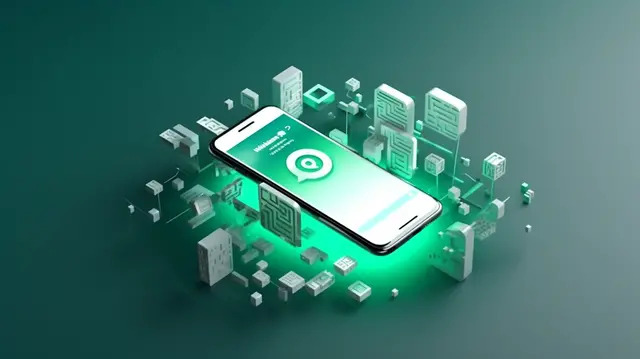Building a WhatsApp Marketing Strategy








Building a WhatsApp Marketing Strategy
Building a WhatsApp Marketing Strategy: Dos and Don’ts
Introduction
With over 2 billion users globally, WhatsApp has become an essential tool for businesses aiming to connect with customers in a personalized way. However, creating a WhatsApp marketing strategy requires careful planning to ensure messages resonate with audiences and avoid common mistakes that can harm customer relationships. In this guide, we’ll go over the key dos and don’ts of WhatsApp marketing to help businesses leverage this platform effectively.
Dos of WhatsApp Marketing
1. Do Personalize Your Messages
- Why: WhatsApp is a personal messaging platform, so recipients expect messages that feel tailored and relevant to them.
- How: Use customer data to personalize messages based on past purchases, preferences, or demographics. This can increase engagement and foster brand loyalty.
- Example: A clothing brand could send personalized product recommendations based on recent browsing or purchase history.
2. Do Respect Customer Privacy and Get Consent
- Why: Privacy is crucial, especially on platforms as personal as WhatsApp. Sending unsolicited messages can lead to customer irritation and even legal consequences.
- How: Obtain permission before messaging customers, often through opt-in forms or by promoting WhatsApp as a customer service channel on your website.
- Example: Encourage users to opt in by offering exclusive discounts or updates via WhatsApp.
3. Do Provide Value-Driven Content
- Why: Customers are more likely to engage with brands that provide helpful or valuable content, not just promotional messages.
- How: Offer value through educational content, special offers, or helpful updates. Balance promotional messages with informative content to keep customers engaged.
- Example: A fitness brand might share workout tips or nutrition advice along with updates on new product launches.
4. Do Use WhatsApp Business Tools
- Why: WhatsApp Business tools like automated greetings, quick replies, and catalogs can streamline communication and enhance customer experience.
- How: Set up automated messages to handle common questions or use quick replies for faster response times.
- Example: Use a catalog to showcase products, making it easy for customers to browse and inquire without leaving WhatsApp.
5. Do Measure and Optimize Your Strategy
- Why: Regular analysis of metrics like message open rates, response times, and customer feedback helps refine your WhatsApp marketing efforts.
- How: Use WhatsApp analytics (if available) or integrate with third-party tools to monitor engagement and adjust your messaging accordingly.
- Example: Analyze which types of messages receive the most responses and tailor future content based on customer preferences.
Don’ts of WhatsApp Marketing
1. Don’t Spam Customers with Excessive Messages
- Why: Frequent, irrelevant messages can overwhelm customers and lead to them blocking your number or opting out.
- How: Set a reasonable message frequency, focusing on quality over quantity, and always provide a reason for each message.
- Example: Send a single reminder about an upcoming sale instead of multiple reminders in quick succession.
2. Don’t Rely Solely on Promotional Content
- Why: Customers are likely to disengage if every message is a sales pitch. WhatsApp is more effective for relationship-building than pure advertising.
- How: Mix promotional messages with helpful or engaging content, such as behind-the-scenes looks, tips, or relevant articles.
- Example: A travel agency could share destination tips and travel inspiration in addition to promotions for discounted trips.
3. Don’t Neglect Customer Service
- Why: WhatsApp is often used for customer support, so failing to provide timely responses can damage customer satisfaction.
- How: Designate team members to handle inquiries promptly or set up automated responses to manage high volumes.
- Example: Use an automated greeting to let customers know their inquiry has been received and that someone will respond shortly.
4. Don’t Send Messages Outside of Business Hours (Without Consent)
- Why: Sending messages late at night or on weekends without permission can be intrusive and affect customer perception of your brand.
- How: Establish clear communication hours and let customers know when they can expect responses or updates.
- Example: Use automated messages to inform customers of your response hours and avoid sending promotions at inconvenient times.
5. Don’t Ignore Customer Feedback
- Why: WhatsApp provides a direct line of communication with customers, so ignoring feedback or complaints can harm your reputation.
- How: Actively monitor feedback, respond promptly, and use suggestions to improve your service.
- Example: If customers frequently mention the same issue, address it proactively and consider making adjustments to your WhatsApp approach.
Conclusion
An effective WhatsApp marketing strategy is built on respect, personalization, and value. By adhering to the best practices outlined here and avoiding common pitfalls, businesses can create positive customer experiences and build strong relationships through WhatsApp.
Call to Action
- Encourage Readers to Get Started: Suggest they start with a simple campaign or customer support channel to get familiar with WhatsApp marketing.
- Subscribe for More Marketing Tips: Invite readers to follow your blog for more insights on using messaging platforms effectively.
Relevant Hashtags
Here are some effective hashtags for promoting this blog post on social media:
- #WhatsAppMarketing
- #DigitalMarketingTips
- #CustomerEngagement
- #SocialMediaMarketing
- #MarketingStrategy
- #WhatsAppBusiness
- #MessagingMarketing
- #CustomerExperience
- #MarketingDosAndDonts
- #WhatsAppTips
- #BusinessGrowth
- #DigitalStrategy
- #WhatsAppMarketing2025
- #BrandCommunication
- #DirectMarketing

